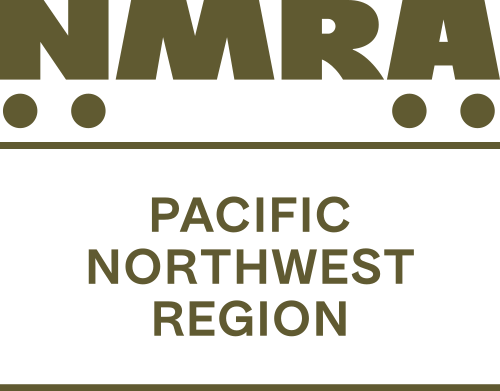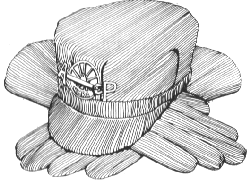


In simple terms, the Achievement Program (AP) is a travel guide to help you on your journey through the world of model railroading. The AP also provides incentive to learn and master the many crafts and skills necessary in the hobby of model railroading. With the completion of each category, you will be issued a certificate acknowledging your achievement. (From NMRA web site)
| PNR AP Chair: | Bill Fassett | MMR | Spokane, WA | 509-979-5205 | b.fassett@comcast.net |
| Jeroen Gerritsen | Springfield, OR | 410-303-1547 | jingyee.jeroen@gmail.com | ||
| Ross Ames | MMR | Troutdale, OR | 503-349-9703 | rossa@buyweston.com | |
| Bob Parrish | MMR | Boise, ID | 208-866-4601 | ||
| Jack Hamilton | MMR, HLM | Silverdale, WA | 360-308-9845 | gradiver@wavecable.com | |
| Bill Fassett | MMR | Spokane, WA | 509-979-5205 | b.fassett@comcast.net | |
| Doug Burton | MMR | Camrose, AB | 6div-apchair@pnr.nmra.org | ||
| Mike Chandler | MMR | New Westminster, BC | 604-526-5078 |
If you have a layout or module(s) - Do you have a Golden Spike Award? See http://www.nmra.org/education/achievement-program for more details
Want to know what the actual requirements are for a certificate? Go to http://www.nmra.org/education/achievement-program for more details or contact your Division AP manager.
Participation in our NMRA Achievement Program is supposed to introduce individual members and modelers to a variety of challenges and learning experiences that will expand their skill set and add to their overall enjoyment of their hobby. The Achievement Program is one of the most significant tangible benefits of NMRA membership. Unfortunately, many members avoid participation in the program because they are hampered by two longstanding but incorrect perceptions; there is far too much paperwork, and I don't need someone judging my work.
So first let's dispel the perceptions and then we'll provide a proven process to expand participation in the program.
The only absolute requirement for the member, with regard to "paperwork" is a final signature on a Statement of Qualification. Author, Prototype, and Dispatcher have written work as part of the criteria which must be satisfied.
Contest and AP are separate programs addressing different goals. The more appropriate approach is to stick to the concept of evaluation, instead of judging, and assessing what the modeler was trying to do, and how well he did it. There is also a clear need to make sure that AP is not about perfection (although the program does not object to that level of work) but rather to stress superior modeling. To put things in perspective, 87½ points out of a possible 125 is 70 percent or a "C" grade. While your parents might not have accepted that while you were in high school or college (when they were paying the bills) that is the bottom line for AP. For further clarity, achieving the designation of MMR does not cause a mantle of greatness to fall over the modeler; it really identifies a person who has been willing and able to expand their individual horizons to participate in all aspects of the hobby and the NMRA. "That's all well and good," you say, "but that does not make it any easier for me to get involved in the program." The answer is the AP on steroids. In the classical approach to AP, the Division or Region AP chairs wait for the modeler to make contact to arrange for an assessment. That procedure resembles those old TV ads about the Maytag repairman. That methodology just does not work very well. If, however, we reverse the roles and have the AP chairs calling members asking for an invite to visit, the action picks up immediately. In addition, if every open house or operating session is also an intelligence-gathering mission with "AP agents" scouting out potential targets, the viability of the program increases several fold. As an example, I was given a copy of the layout tour book from the recent Narrow Gauge convention in the Seattle area. All of the layout owners are NMRA members and they are all potential AP targets. All it takes is a call to the modeler to arrange a visit to get a foot in the door. Reversing the roles and responsibilities for initial contact and pressing the program may be offensive to the purists but we need to understand that increasing the number of participants (and eventually MMRs), without a decrease in the quality of the end product being evaluated, is beneficial to the organization and does not diminish the achievements of those who have already earned MMR status.
Thanks to the urging and demonstrated leadership of my friend Di Voss, we employ a "team" approach for AP visits to a modeler's layout. Once the invitation to visit is received, a team of between 3 and 6 evaluators is assembled. During the actual visit, an initial assessment of the areas (certificate subject matter) to be worked is determined with the modeler. The team is broken down into area assignments and the work commences in a parallel mode. For example, one team may be working structure evaluation for Merit Award while a second team is considering Civil engineer requirements and a third reviewing the record for Volunteer. The modeler is present throughout and available to answer any questions team members might have), or to provide any additional documentation they might need. The first thing this approach does is to look at areas for which the modeler may not have considered themselves ready. Far too often members read more into the instructions and opt for worse case scenario when trying to determine, for themselves, if they are ready for a certificate. The team can sort through a bunch of misgivings and come to a much more rational and appropriate conclusion. With the team approach we have also found that allowing evaluators to work on some areas individually presents better results.
The end result of a team visit to a layout is normally far more recognition than the member anticipated. In addition, the team can review other areas and leave the modeler with very specific understanding of what is required to complete work for other certificates. If the team starts the visit anticipating wide success, the visit will be positive and beneficial for everybody. Besides, how else do you get to actually visit and enjoy all those layouts you have heard about but never got the invitation to visit? For me, personally, every layout visit is a chance to learn more, and find new ways to solve problems that I am having with my work. Even though I am an MMR I am still learning and happy to have any opportunity to see how the other guys are doing it.
NMRA members in the Pacific Northwest Region may accrue Time Unit credit towards the Association Volunteer Achievement Program Certificate by participating in the Public Service Program.
Most recent update: December 16, 2025
This NMRA on the Web page is maintained by:
Peter Ulvestad, webmaster@pnr.nmra.org,
Copyright 1995-2025 by the National Model Railroad Association. All Rights Reserved.